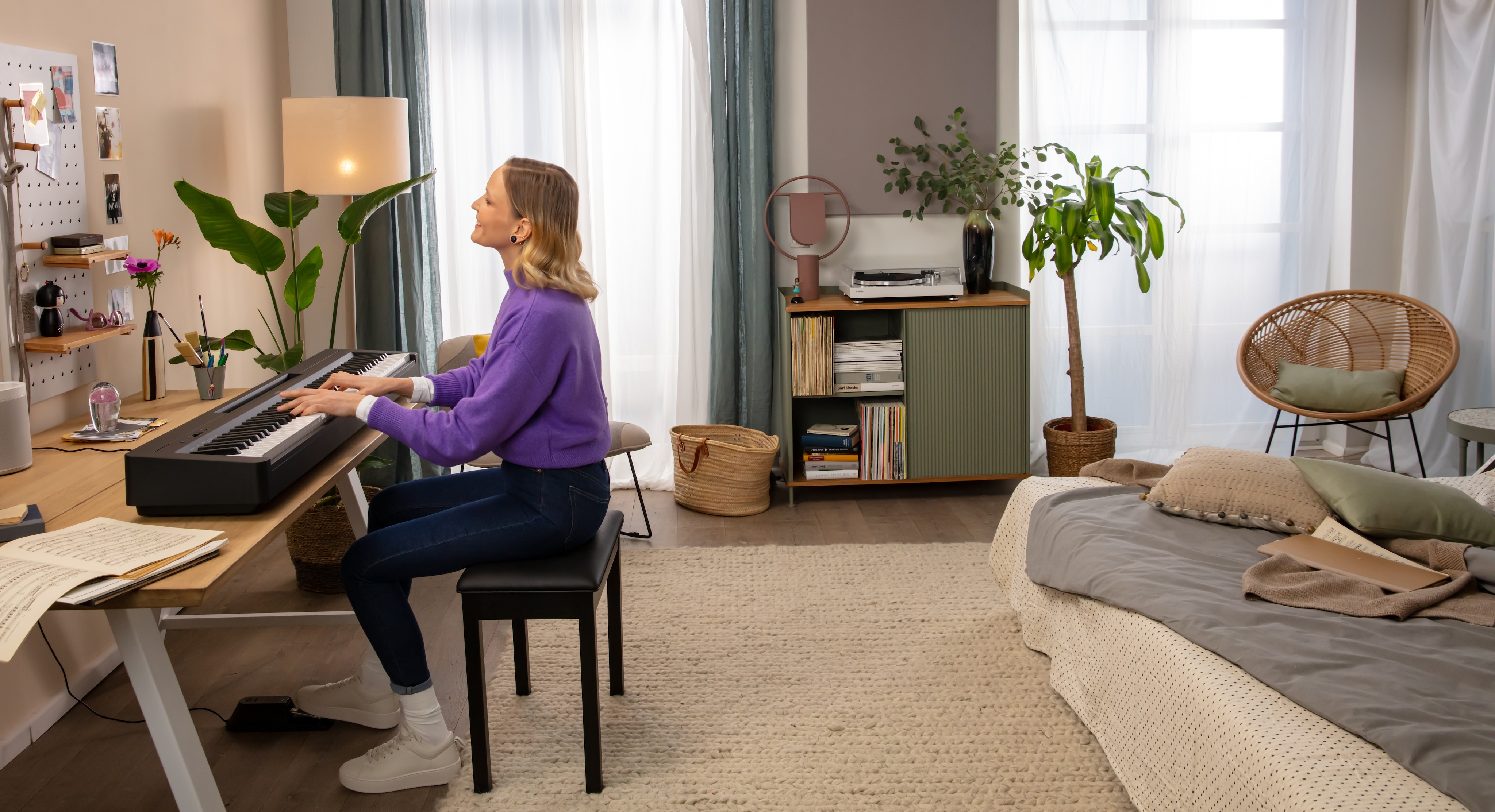Beginner’s Guide: 88-Key Piano vs 61-Key Keyboard | Yamaha Malaysia
Choosing Between an 88-Key Piano and a 61-Key Keyboard for Beginners
1) Understanding the Difference: 88-Key Piano vs. 61-Key Keyboard
2) Why Choose the Yamaha P-145?
3) Why Choose the Yamaha PSR-E283?
When starting your musical journey, one of the first decisions you'll face is choosing the right instrument. For many beginners, this often boils down to selecting between an 88-key piano and a 61-key keyboard. In this guide, we’ll explore the features of two popular models: the Yamaha P-145 and the Yamaha PSR-E283, helping you make an informed decision.
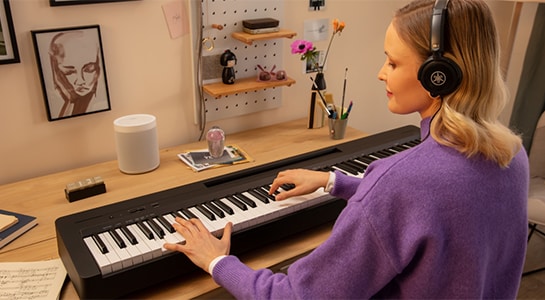
Understanding the Difference: 88-Key Piano vs. 61-Key Keyboard
88-Key Piano
An 88-Key Piano, like the Yamaha P-145, offers a full range of piano keys, replicating the experience of an acoustic piano. This model is weighted, meaning the keys respond similarly to traditional pianos, providing a more authentic playing experience. It’s ideal for those who are serious about learning piano, as it encourages proper finger strength and technique.
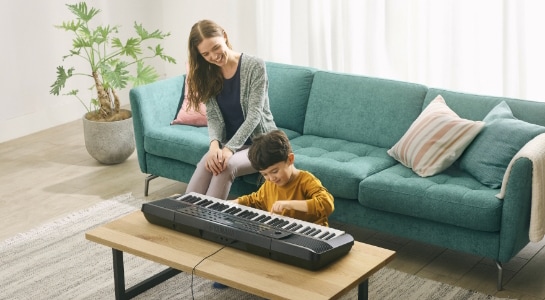
61-Key Keyboard
In contrast, the Yamaha PSR-E283 is a 61-key keyboard that is more portable and versatile. It features a wide range of sounds and accompaniment styles, making it a fun choice for beginners who want to experiment with different musical genres. While the keys have a lighter touch, this design enhances ease of play, making it suitable for those just starting out. However, transitioning to a full digital piano later may require some adjustment in playing technique.
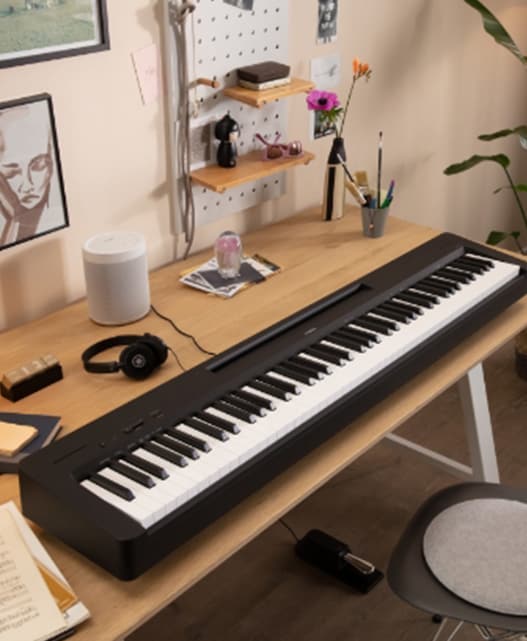
Why Choose the Yamaha P-145?
The Yamaha P-145 is an excellent choice for beginners who are serious about learning the piano. Here are some of its key features:
Weighted Keys:
The P-145's Graded Hammer Standard (GHS) keys provide an authentic piano feel, making it easier to transition to an acoustic piano later on.
Realistic Sound:
It delivers the rich sound of the Yamaha CFIIIS concert grand piano, the Yamaha's flagship CFX. This makes it an excellent choice for those seeking high-quality sound in a compact, digital format.
Simple Interface:
With an intuitive layout, beginners can easily navigate the controls and start playing right away.
Built-In Lessons:
The P-145 includes built-in songs, helping you learn at your own pace. This makes it one of the best pianos for beginners.
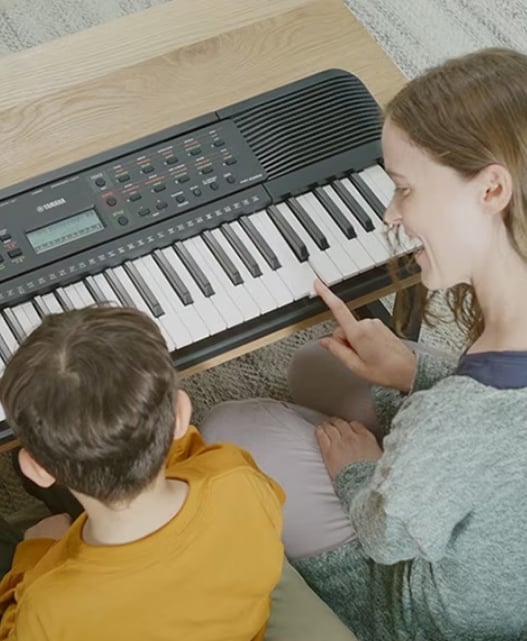
Why Choose the Yamaha PSR-E283?
The Yamaha PSR-E283 is perfect for those looking for a versatile and fun instrument. Here’s why it stands out:
Lightweight and Portable:
The PSR-E283 is easy to carry, making it ideal for lessons or practice on the go.
Variety of Sounds:
With over 400 instrument voices and 150 preset auto accompaniment styles, you can explore a wide range of music genres.
Educational Features:
This keyboard comes with built-in songs and lessons that make learning engaging and enjoyable.
Affordable:
Typically, 61-key keyboards are more budget-friendly, making the PSR-E283 a great option for beginner piano players.
Which One Should You Choose?
Your choice ultimately depends on your musical goals. If you're serious about learning piano and plan to progress to more complex pieces, the Yamaha P-145 is the better option. It will help you build a strong foundation in piano technique and is considered one of the best pianos for beginners.
On the other hand, if you want a versatile instrument for experimentation and casual playing, the Yamaha PSR-E283 could be the perfect fit. It offers a playful approach to music-making, allowing you to explore various styles without the commitment of a full digital piano.
Conclusion
Choosing between an 88-key piano and a 61-key keyboard is an important step in your musical journey. Both the Yamaha P-145 and Yamaha PSR-E283 have unique advantages that cater to different learning styles and goals. Take some time to consider what you want from your instrument, and don’t hesitate to test them out in-store if possible. With the right choice, you’ll be well on your way to mastering your beginner piano skills. Happy playing!
FAQs
1. What’s the main difference between an 88-key piano and a 61-key keyboard?
An 88-key piano like the Yamaha P-145 has weighted keys for an authentic feel, while a 61-key keyboard like the Yamaha PSR-E283 is more compact and versatile, designed with interactive features like Duo Mode, Smart Chord, and a variety of built-in learning tools, making it particularly suitable for beginners and casual players.
2. Which is better for beginners: an 88-key piano or a 61-key keyboard?
For serious piano learning, the P-145 88-key piano is ideal. For versatility and exploration, the PSR-E283 61-key keyboard is a great choice, particularly suitable for children who may find its smaller size more manageable.
3. Are weighted keys important?
Yes, they help develop finger strength and technique, making them beneficial for beginners.
4. Can I practice seriously on the Yamaha PSR-E283?
While fun and versatile, it may not provide the same foundation as an 88-key piano for serious practice.
5. How do I choose between the two?
Consider your goals: choose an 88-key piano for traditional learning and a 61-key keyboard for casual exploration.
